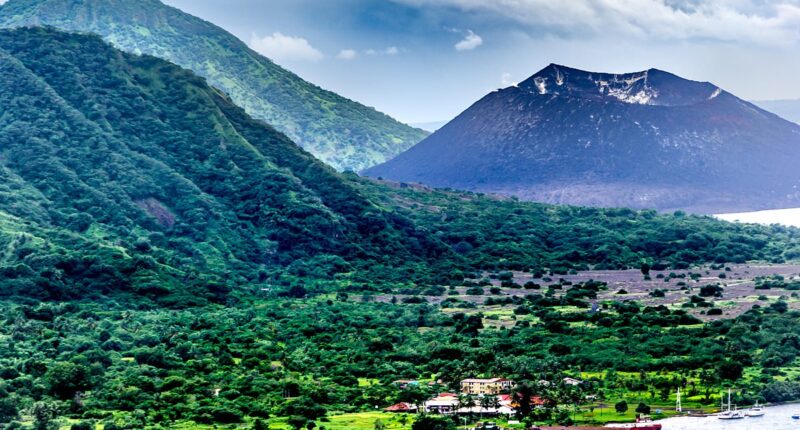A tsunami warning has been issued for Papua New Guinea following a strong 6.9 magnitude earthquake.
The Pacific island nation was struck by a shallow earthquake on Saturday morning local time, with a depth of six miles, as reported by the US Geological Survey (USGS).
It struck at 6.04 am local time (8.04pm GMT) and was centred offshore, 120 miles east of the town of Kimbe on the island of New Britain.
The USGS issued a tsunami warning for waves of one to three metres along some parts of the Papua New Guinea coastline after the quake.
A caution about smaller waves of 0.3m was issued for the nearby Solomon Islands.
There were no immediate reports of damage. Just over 500,000 people live on the island of New Britain.
Australia’s Bureau of Meteorology confirmed that there was no tsunami threat to Australia, which is the closest neighbor to Papua New Guinea. Additionally, there was no warning issued for New Zealand.
Marolyn Simbiken, a receptionist at Kimbe’s Liamo Reef Resort, said so far she had not seen any damage.

A tsunami warning has been issued for Papua New Guinea following a strong 6.9 magnitude earthquake. Pictured: New Britain island


The USGS issued a tsunami warning for waves of one to three metres along some parts of the Papua New Guinea coastline after the quake
‘We did feel the earthquake here,’ she told AFP.
‘But there’s not big damage. Nothing was damaged here and there was no evacuation.’
Walindi Plantation Resort worker Barbara Aibilo she felt a ‘slight shake’.
Two smaller quakes, with preliminary magnitudes of 5.1 and 5.3, afterwards struck near the same patch of sea, according to the USGS.
Papua New Guinea experiences frequent earthquakes due to its location on the seismic ‘Ring of Fire,’ which is a zone of high tectonic activity extending through Southeast Asia and the Pacific basin.
Although they seldom cause widespread damage in sparsely populated areas, they can trigger destructive landslides.
The latest quake comes just days after a deadly 7.7 earthquake struck Myanmar, with tremors felt in Bangkok, Thailand.
More than 3,000 people are confirmed dead in Myanmar following last week’s devastating earthquake as hopes fade of finding any more survivors.

Rescuers carry out search and rescue on the damaged buildings in the aftermath of an earthquake in Mandalay, Myanmar

Chinese rescue workers work at the site of a collapsed building, in the aftermath of a strong earthquake, in Mandalay, Myanmar, March 31, 2025
The epicentre of the quake, which struck at midday on Friday, was near the country’s second-largest city Mandalay.
Large swathes of the country were impacted, damaging roads and bridges while leaving several areas without power or communications – effectively cutting off several towns and villages from the rest of the world.
Myanmar’s ruling military junta has been accused of suppressing the scale of national disasters, leading the BBC to speculate the death toll could be far higher, as the UN warned the quake had compounded ‘an already dire crisis’ amid a four-year civil war.
Four days after the earthquake struck, many people are still sleeping outdoors without any aid, either unable to return to ruined homes or afraid of further aftershocks.
Meanwhile, the US Geological Survey’s predictive modelling estimated that the number of casualties could top 10,000 and economic losses could exceed the country’s annual economic output.
The earthquake also rocked neighbouring Thailand, causing a high-rise building under construction to collapse, burying dozens of people alive.

















